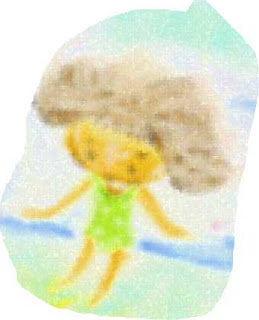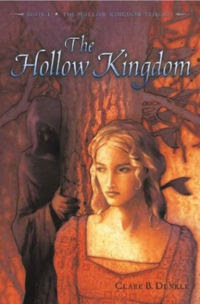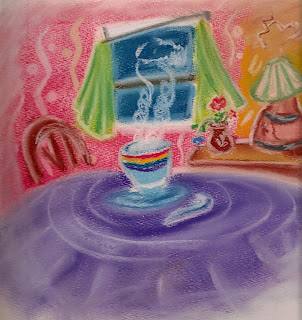
I would like to give being an octopus a try! To have all of the arms- oh my!
Viewing: Blog Posts Tagged with: chalk pastel, Most Recent at Top [Help]
Results 1 - 6 of 6
Blog: Monday Artday (Login to Add to MyJacketFlap)
JacketFlap tags: octopus, chalk pastel, carrie anne culp, carrie wilcox, Add a tag
Blog: Monday Artday (Login to Add to MyJacketFlap)
JacketFlap tags: chalk pastel, carrie anne culp, Add a tag
Blog: Monday Artday (Login to Add to MyJacketFlap)
JacketFlap tags: balloon, chalk pastel, carrie anne culp, Add a tag
Blog: Monday Artday (Login to Add to MyJacketFlap)
JacketFlap tags: memories, chalk pastel, carrie anne culp, Add a tag

Summer is leaving and soon it will be a memory away:)
Blog: DIANE SMITH: Illo Talk (Login to Add to MyJacketFlap)
JacketFlap tags: cat, drawing game, chalk pastel, Add a tag
Since I didn't have any pressing projects in the studio at the moment, I did the old random drawing game that I do to warm-up once in a while. The subject I pulled out of the bowl was: cat. The media: (Yep! You guessed it) chalk pastel.
I don't know what it is - I don't do this very often, yet chalk pastel has been the randomly selected media most of the time. And, as you may already know, chalk pastel and I don't really "click."
Luckily, this encounter with chalk pastel was much more pleasant than the previous ones. Where those drawings will remaine forever buried on the drawing pad, I actually kind of like this one . I don't know what it is with blue, though (if you recall the sickly blue pig of a couple months back - shudder). I guess I'm drawn more to greens, blues, and purples more than I am to the pinks, oranges, and yellows.
I think the many hours spent with the colored pencil on the last project actually helped with this one - I think I learned a lot about color and being able to actually achieve some of the colors I'm after. I'm thrilled to have a better understanding in that area that I'm sure will carry over into other aspects of my work.
Who knows! Maybe now I'll feel a bit less threatened by chalk pastels. I'd love to try working on colored paper sometime soon.
Blog: Miss Erin (Login to Add to MyJacketFlap)
JacketFlap tags: blog blast tour, clare b dunkle, Add a tag
I am very pleased to host an interview with Clare B. Dunkle, author of the wonderful young adult fantasy trilogy: The Hollow Kingdom (my review), Close Kin, and In the Coils of the Snake. She also wrote By These Ten Bones, which I have yet to read. You can visit her online at her website: www.claredunkle.com. In particular, be sure to visit the helpful writing section of the site.
How did you get the idea for the Hollow Kingdom trilogy?
As I grew older, I noticed that the pattern of abduction for marriage has come up again and again throughout history: at times, large populations of women were hauled away into enemy camps or countries, where they were expected to settle down and keep the house for their abductor-husbands. This continues to confuse me. How can your enemy and captive wind up being a friendly companion and the mother to your children? Even more complicated were the lives of noble or royal women, who might be sent into a rival country in order to seal a peace treaty or form a profitable alliance. How did the 14-year-old Anne of Brittany, for example, feel about being forced to marry her enemy, the King of France? (Hint: she brought two beds with her to her new home.) How did young Catherine Howard feel about the 300-pound Henry VIII? How did Elizabeth Charlotte of the Palatinate feel about leaving her home in Heidelberg and marrying the homosexual Duke of Orleans? How would I feel if I had to leave my home and settle down among a culture I didn't know with a spouse who hadn't been my own choice?
A fair number of modern stories sugarcoat the problem by offering an unrealistic solution: thus, we see Princess Jasmine in Disney's Aladdin throwing a tantrum, running away from the castle, and finding a commoner boyfriend she can appreciate. Certainly rebellion seems the logical reaction to such a difficult life, but rebellion for years or decades sounds far-fetched to me. And what about the women who looked for ways to make peace with their new lives and find something there to be happy about? Were these women weak for giving up the fight? Should they have continued to rebel and stayed bitter for years? What would I have done in their place? I had and have no answers to these questions, and that makes them excellent catalysts for stories. (I don't know about you, but I distrust the works of authors who tell a story to show off what they do know.)
 When I wrote The Hollow Kingdom, my teenage daughters, Valerie and Elena, had just moved away from home to live in a German boarding school. Valerie and Elena were the only Americans there at the time, and they struggled with issues of acculturation, national identity, and bigotry--both their own and that of others. When a teacher praised Valerie one day by telling her she was "thinking like a German," she promptly burst into tears! So these ideas of rebellion versus acceptance and civic pride versus prejudice were very much on my mind.
When I wrote The Hollow Kingdom, my teenage daughters, Valerie and Elena, had just moved away from home to live in a German boarding school. Valerie and Elena were the only Americans there at the time, and they struggled with issues of acculturation, national identity, and bigotry--both their own and that of others. When a teacher praised Valerie one day by telling her she was "thinking like a German," she promptly burst into tears! So these ideas of rebellion versus acceptance and civic pride versus prejudice were very much on my mind.I chose to set The Hollow Kingdom in the territory of British folklore because it has a strong tradition of magical abduction both of women and of children. Besides, I've always loved British folklore. Lloyd Alexander's Prydain series got me studying it at an early age, and I spent my spare time in middle school roaming the nearby university library and reading scholarly tomes like The Origin of the Grail Legend and other such esoteric delights. And again, this was an area in which my mother's reading and research influenced me. I've been thinking about life under a lake since early childhood because my mother named me for the Lady of the Lake in Arthurian romance (my middle name, that is: Nynyve).
When I first began to write the trilogy, I thought the elves were already gone. This brought the story into line with a number of folktales which tell of the departure or dwindling away of the Fair Folk. But I brought the elves back in Close Kin because they were my perfect chance to show a culture in decline. Which aspects of a culture will last the longest? Probably not the philosophical ideas unless they're pretty simplistic; certainly nothing that relies on education or
scholarship. Almost the only thing Sable's elves have left is a handful of marriage traditions, something approximating traditional clothing, and their prejudice against other races. I came to the conclusion that prejudice would be the very last thing to go.
If Close Kin was my chance to show elvish culture in decline, In the Coils of the Snake gave me the chance to envision normal elvish culture. For an author who writes from the folklore tradition, this was just too much to pass up. Elves are hard to bring to the page because what we know about them from folklore is so cryptic. What kind of person wants to live in the forest and dance all night? And if every single member of society is beautiful, how will that affect a culture? We see it affect Arianna in one way: she doesn't mind captivity, deprivation, or even death, but she has a horror of deformity. We see it affect Nir in a different way: because everyone around him is beautiful, he doesn't think of his own good looks as much of an asset, so he completely misses the clues that Miranda is falling for him. But he and Miranda miss a lot of clues anyway. One of the most interesting things about writing the trilogy was the chance to explore how our cultural norms determine our ability to communicate with others. The further cultures are from one another, the harder it is for their representatives to figure one another out, particularly if they haven't studied the other culture ahead of time. Living in Germany taught me that, and in the trilogy, Miranda and Nir have to learn it, as well as Catspaw and Arianna.
Were the themes of beauty vs. ugliness apparent to you right away when you got the idea, or did that evolve as you went?
The interesting thing, though, is how unwilling readers have been to picture Marak's true ugliness. When I first wrote the manuscript, I thought my goblin King was plenty ugly with his extra finger, gray skin, brown lips, dark teeth, floppy ears, and mismatched eyeballs. But test
readers were falling for him almost at once! And they had very little sympathy for Kate as a result. So I sat down and made Marak uglier in about the third draft: specifically, that's when he acquired the unappealing characteristics of old age. Even now, I get emails from readers who ask me whether Marak looks like David Bowie in The Labyrinth, and I reply that he certainly does not. Marak looks like an orc, and he's always looked like an orc. That's what goblins are, after all. But such readers who contact me on this question often don't write back. They just don't want to face it. As one told me, "My Marak doesn't look like that." And I've read favorable comparisons between Marak and Johnny Depp. If the goblin King looked like Depp, I don't think Kate would have been running away!
Another interesting reaction to Marak's appearance has been the complaint that he doesn't act like an ugly person. But how should an ugly person act? There's a fascinating exploration of stereotype and prejudice to be had by thinking that complaint through.
Kate's beautiful, and I wasn't too crazy about that from the very beginning; as a rule, I dislike beautiful characters unless they have a good reason to be beautiful. Kate does due to her elf blood, so she stayed that way, and her saving grace is that she doesn't particularly think of herself as beautiful. She's too sheltered to have seen yet the effect her appearance can have on others. At the beginning of the book, she's much more apt to think of her appearance as a detriment because she's so short.
Playing with cultural ideas of beauty gave me lots of satisfaction in the books. For instance, I realized, working with the elves, that beauty can be pretty boring because it's such a narrow standard. If everyone has to fall within that standard, then those people won't have much about them to make them distinctive. This makes Miranda a knockout in spite of her imperfect human looks: with her auburn hair, she's as exotic among the elves as a blue-haired girl would be in the school lunchroom. I also got interested in the way our human cultures identify other societies as "ugly" just because they show a certain racial type. My pretty Hispanic sister-in-law, Millie, told me she thought that she was really ugly when she was growing up in small-town Texas because she didn't have the blond hair and blue eyes that the "right" children had. I twisted this idea to its ultimate conclusion among the goblins and made Seylin horribly self-conscious for his drop-dead gorgeous looks since in his culture that type of beauty is associated with weakness.
When an idea comes to you, do you fall in love with it right away and start working on it? Or do you set it aside for awhile and let it brew?
By In the Coils of the Snake, Seylin's mature and confident, but he still isn't the one with the real power. He can only suggest things; he can't command them, and most adults, including me, can relate to that. And although he finally has the chance to realize his dream of spending time in an elf camp, he does so with a full understanding of his own cultural identity. No matter how fond he may be of elvish ideas and customs, Seylin isn't an elf. He knows his limits. I've had to face limits like that in my own life. I had to recognize, for example, that years of living in Germany wouldn't make me a master of the German language. But that was all right. Like Seylin, I've made my peace with who I am.
What are some of your favorite characters from fantasy novels?
What are you working on next?
Next I'll probably finish a manuscript with the working title of Rose in Sawdust, a story told from the point of view of a rich girl, Rose, who gets transposed into the body of a doll, while the doll takes over her body in order to live a regular little girl's life. But this isn't Raggedy Ann we're talking about. Stuck in the attic with a whole slew of antique toys and dollhouses, Rose finds that she's not the first person in her family to be replaced by a doll: her great-uncle is still up there in one sunny corner, surrounded by his favorite games, living out a kind of boy's eternity in the body of a red-headed cowboy doll. There are mysteries and disappearances and hidden messages and treasures from the past, but mainly the story allows me to play with the idea of a doll, which has its roots in magic and superstition as well as in play. I started it because we went to an antique dollhouse museum in Basel, Switzerland, and the dolls there worried me. There were too darn many of them in the rooms, for one thing. And the idea of a doll maintaining its existence unchanged while the child who played with it has grown old and died ... that's just very, very creepy.
Check out today's other WBBT interviews of these authors at these blogs: Lisa Ann Sandell at Chasing Ray Perry Moore at Interactive Reader Christopher Barzak at Shaken & Stirred Autumn Cornwell at The Ya Ya Yas Jon Scieszka at Seven Impossible Things Before Breakfast Gabrielle Zevin at Jen Robinson's Book Page Judy Blume at Not Your Mother's Book Club Erik P. Kraft at Bookshelves of Doom







I feel this way getting the kids off to school each morning! Great job.
Cute!